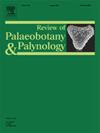低标注成本下花粉图像的深度学习:形态特征与训练预测策略的联合优化
IF 1.7
3区 地球科学
Q2 PALEONTOLOGY
引用次数: 0
摘要
花粉鉴定在孢粉学、古生态学、植物学、医学和法医学等领域具有重要意义,但传统的显微形态分析方法效率低、主观性强。在本研究中,我们提出了一种基于深度学习的创新方法来提高花粉鉴定的准确性和效率。我们构建了一个高质量的花粉数据集,包含141个物种的5521张图像和包含20个标准化形态学特征的结构化属性表。该模型采用改进的ResNet50架构,利用掩蔽机制将图像特征与形态学数据相结合,显著提高了分类性能。此外,我们提出了一种利用弱标记数据(未标记图像+一些形态学特征)和完全标记数据的联合训练策略,以缓解数据稀缺性问题。实验结果表明,引入形态特征后,模型的准确率从83.00%显著提高到89.49%以上,具有更强的泛化能力,有效地减少了过拟合。该研究为花粉自动识别提供了一个可扩展的解决方案,解决了数据利用和分类准确性方面的关键挑战。本文章由计算机程序翻译,如有差异,请以英文原文为准。
Deep learning of pollen images under low annotation costs: joint optimization of morphological features and training and prediction strategies
Pollen identification is of great importance in the fields of palynology, palaeoecology, botany, medicine and forensic science, but traditional microscopic morphological analysis methods are inefficient and subjective. In this study, we propose an innovative approach based on deep learning to improve the accuracy and efficiency of pollen identification. We constructed a high-quality pollen dataset containing 5521 images of 141 species and a structured attribute table containing 20 standardized morphological features. With an improved ResNet50 architecture, the model utilizes a masking mechanism to combine image features with morphological data, significantly improving classification performance. In addition, we propose a joint training strategy that utilizes both weakly labeled data (unlabeled images + some morphological features) and fully labeled data to alleviate the data scarcity problem. The experimental results show that with the introduction of morphological features, the accuracy of the model significantly improves from 83.00% to at least 89.49% and exhibits stronger generalization ability, effectively reducing overfitting. This study provides a scalable solution for automated pollen identification, addressing key challenges in data utilization and classification accuracy.
求助全文
通过发布文献求助,成功后即可免费获取论文全文。
去求助
来源期刊
CiteScore
3.50
自引率
21.10%
发文量
149
审稿时长
6 months
期刊介绍:
The Review of Palaeobotany and Palynology is an international journal for articles in all fields of palaeobotany and palynology dealing with all groups, ranging from marine palynomorphs to higher land plants. Original contributions and comprehensive review papers should appeal to an international audience. Typical topics include but are not restricted to systematics, evolution, palaeobiology, palaeoecology, biostratigraphy, biochronology, palaeoclimatology, paleogeography, taphonomy, palaeoenvironmental reconstructions, vegetation history, and practical applications of palaeobotany and palynology, e.g. in coal and petroleum geology and archaeology. The journal especially encourages the publication of articles in which palaeobotany and palynology are applied for solving fundamental geological and biological problems as well as innovative and interdisciplinary approaches.

 求助内容:
求助内容: 应助结果提醒方式:
应助结果提醒方式:


